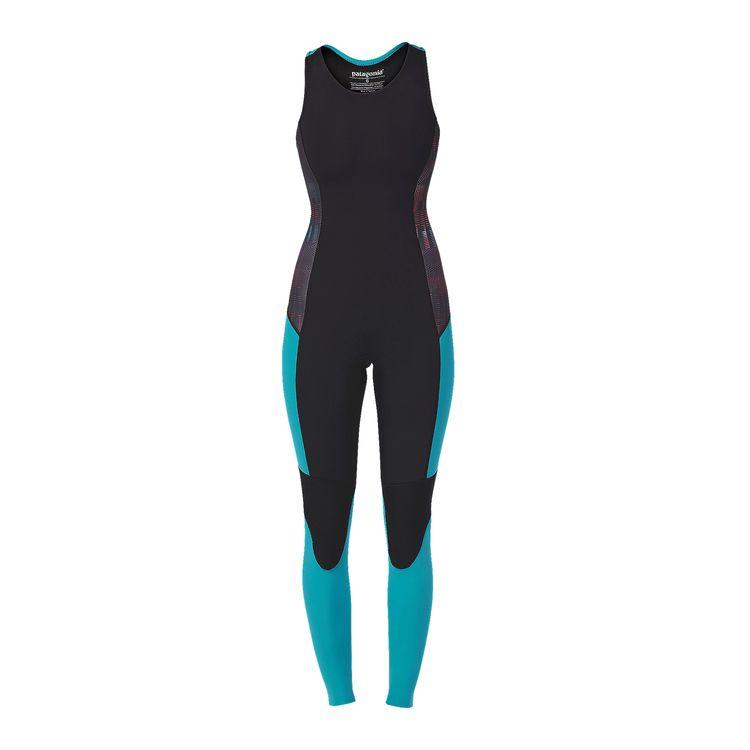
Those wetsuits surfers wear are usually made from a synthetic rubber called neoprene that is far from environmentally friendly. Outdoor gear manufacturer Patagonia has been looking for a way to ditch the material since 2008. This year, the company released a line of wetsuits for fall that are 100 percent neoprene-free. First released this spring in Australia, the new wetsuit line recently made its debut in North America, Europe and Japan.
As a substitute for neoprene, Patagonia now uses natural rubber from hevea trees in the highlands of Guatemala, in the volcanic soils of the Sierra Madre de Chiapas Range. The hevea trees are grown on reclaimed farmland. Hevea trees are a time-honored rubber source, and its material goes into things like cars and airplane tires. But some of the world’s hevea trees are grown in rainforest zones that have been clearcut. Patagonia didn’t want to contribute to deforestation in tropical zones, so the company didn’t use rubber from hevea trees until it could find a more sustainable source.
In 2014, Patagonia released several Yulex wetsuits made from natural rubber. Yulex is a company that manufactures natural rubber-based materials. The new line is made up of 21 full-length Yulex wetsuits for men, women and kids. The Yulex wetsuits “perform as well or better than conventional neoprene wetsuits,” the company said in a press release. A small amount of chlorine-free synthetic rubber is added to the natural rubber to increase ozone and UV resistance and to increase durability and strength.
The use of natural rubber reduces carbon emissions by up to 80 percent compared to neoprene. The line of wetsuits is the “first and only” line to utilize natural rubber from sources that are Forest Stewardship Council certified. The Rainforest Alliance conducts audits to ensure that the plantation the natural rubber is sourced from adheres to FSC’s standards and is managed in a way that doesn’t contribute to deforestation.
“Surfers and wetsuit manufacturers — including Patagonia — have relied on neoprene for years, despite the fact that it’s a nonrenewable, petroleum-based material with an energy-intensive manufacturing process,” Hub Hubbard, Patagonia’s wetsuit development manager, said in a statement. “Neoprene is nasty stuff, but for a long time we had no alternative. Through our partnership with Yulex we’ve invested in a plant-based game-changer and built it into our entire fullsuit line.”
Back in 2008, when Patagonia first started making wetsuits, the company wrote in a blog post about the environmental damage from neoprene. The synthetic rubber can be manufactured from petroleum or limestone. While the environmental effects of petroleum are widely known, the harm limestone can do to the environment isn’t common knowledge. Limestone rock is a non-renewable resource extracted from the ground, just like oil. It is mined from mountains. Cranes, backhoes and gigantic dump trucks are all needed to mine limestone rock, and that equipment is powered by diesel. It takes an energy-intensive process to heat the crushed limestone in a furnace. Patagonia uses limestone-based neoprene for most of its products containing the material.
On the flipside, Patagonia uses a slew of other environmentally-friendly materials in its products. One of those is recycled polyester. The aforementioned Yulex wetsuits contain a recycled nylon lining. Polyester is made from petroleum, so Patagonia started making recycled polyester from plastic soda bottles back in 1993. The first outdoor clothing company to manufacture materials from trash, Patagonia now makes recycled polyester from used soda bottles plus worn-out garments and unusable manufacturing waste.
Nylon fiber, like neoprene, is derived from petroleum. Patagonia started using recycled nylon in its products five years ago. Some of the recycled nylon the company uses is sourced from post-industrial waste fiber, yarn from a spinning factory and waste from weaving mills. Patagonia is now experimenting with turning discarded industrial fishing nets into recycled nylon.
Image credit: Patagonia

Gina-Marie is a freelance writer and journalist armed with a degree in journalism, and a passion for social justice, including the environment and sustainability. She writes for various websites, and has made the 75+ Environmentalists to Follow list by Mashable.com.














